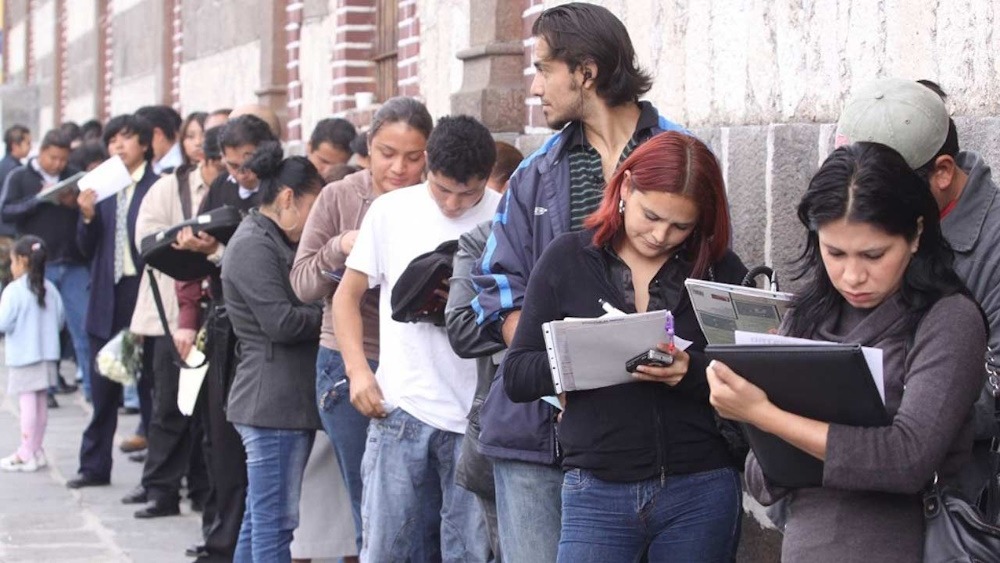Argentina is facing the prospect of an impending recession. Since April, the economy has exhibited a persistent lack of recovery, with declines in consumption and production now impacting the labor market. Suspensions are on the rise, and conflicts are escalating. Official data indicates that June recorded the highest number of layoffs in the past nine years. The Argentine Industrial Union has issued a warning regarding the deterioration of the situation in July, while financial institutions are alerting to an increase in the incidence of bounced checks. The dollar, positioned close to the upper boundary of the exchange band, poses a risk of further diminishing purchasing power.
Since April, the economy has not recorded any month-on-month growth — and April’s rebound was merely a response to a notably weak March, which had already declined 1.8% from February in anticipation of a change in the exchange rate regime. By the conclusion of 2025, the government might herald a growth rate of approximately 3%, yet this will likely amount to little more than a statistical carryover. In practical terms, sales, production, and access to credit have effectively ground to a halt. Recently, there have been complaints emerging from the Argentine Construction Chamber, the Santa Fe Industrial Federation, Fundación Mediterránea, and even some subdued discontent from the financial sector. Last week Ámbito, reported the initial signs of disruption in payment chains, particularly within sectors characterized by extended supply chains. In a recent discussion, La Fábrica, Jorge Brito, indicated that the incidence of bounced checks experienced a twofold increase from June to July, with this trend persisting into August. He referred to it as an amber warning for the sector.
The contraction in production and demand instigated by the monetary tightening is adversely affecting the labor market. Data released last week by the Labor Secretariat indicates that layoffs increased in June relative to the previous month, rose on a year-on-year basis, and reached their highest level in the past nine years. The data appears to be outdated at this point. Recently, a porcelain tile factory in Pilar and a motorcycle plant in Campana ceased operations, resulting in layoffs at the dairy company La Suipachense. Further reductions are anticipated in tire manufacturing, while tensions have escalated within the metalworking and petrochemical sectors. One might find it pertinent to consider the economic challenges that lie ahead for Milei following the election, particularly in relation to the expectations of Argentina’s markets. Luis Campos, indicated to Ámbito that “almost all sectors” contracted in June and “everything indicates that this trend may have deepened in the third quarter, with further deterioration in the formal labor market.” In July, approximately 25% of firms reduced their workforce, as indicated by the most recent report — marking the peak figure in the entire data series. Campos elucidates that the decline in formal employment is being somewhat counterbalanced by an increase in self-employment, which accounts for the stagnation in unemployment figures thus far.
However, the situation regarding working conditions is worsening: within ride-hailing platforms, the driver population is expanding, demand is declining, and fares have remained stagnant for a year — a scenario that increasingly lacks coherence. The dollar approaches the upper limit of the exchange band, posing a risk to the purchasing power of wages once more. On Friday, sell orders for approximately US$300 million emerged at a rate of AR$1,472 per dollar. The market appears to believe that the Central Bank has engaged in intervention, depleting reserves, and doing so more than a month prior to the midterm elections in October. Most of those reserves are essentially “borrowed” from the International Monetary Fund. The decline in activity and employment casts uncertainty on the ruling coalition’s electoral prospects in October, while simultaneously questioning the assumption that austerity has widespread popular backing — a rationale the IMF has employed to defend its heightened exposure to Argentine risk. The significant loss in Buenos Aires province served as a preliminary indicator.
Campos argues that this economic plan was effective solely in the context of recession and a decrease in formal employment. The critical issue at hand is whether the government can sustain social legitimacy sufficiently to see it through. “Being extremely optimistic, employment might hold at current levels, but everything will depend on the new economic program, because it’s becoming quite clear that the current one will not continue,” he stated.

